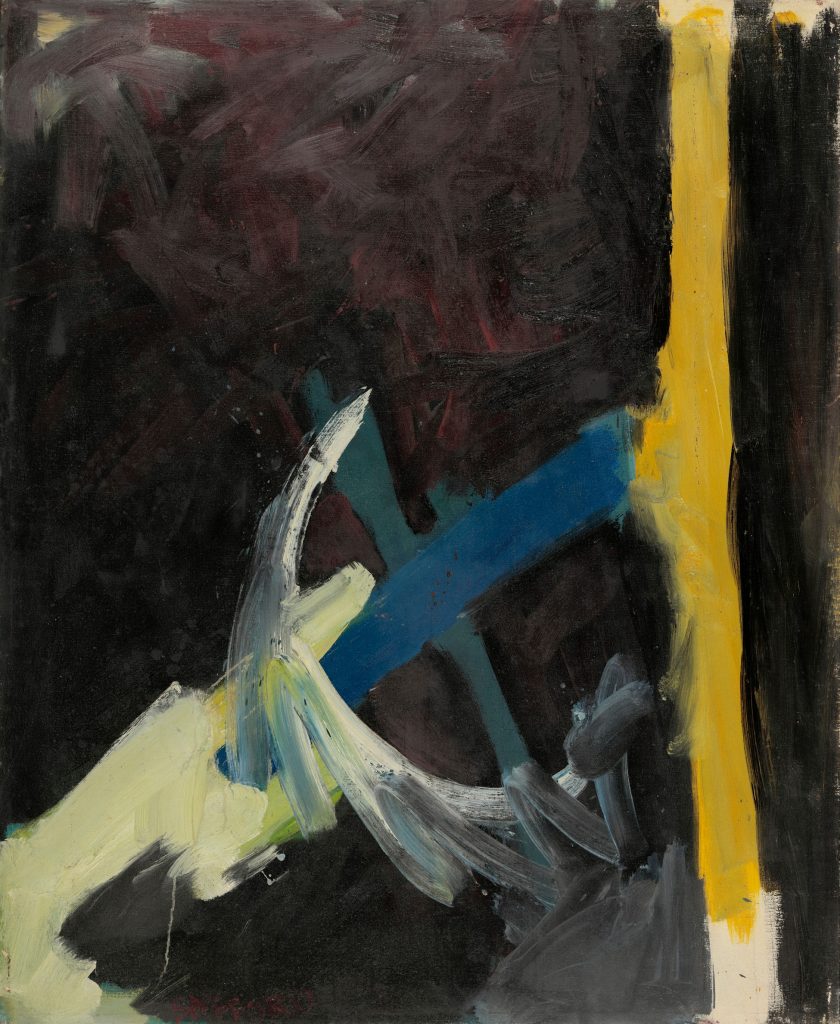Charles Putnam Safford was born in Logansport, Indiana in 1900. As a teenager he ran away from home eventually ending up in New York, where he enrolled in Pratt Institute. He moved to California in the 1930s, where he was a book illustrator for the Works Progress Administration program in San Francisco. One of his first exhibitions in the Bay Area was held in 1934 at the Oakland Art Gallery (what later became the Oakland Museum of California). He was drafted into the military and served in World War II. Upon being discharged from the military, he studied with Hans Hoffman in New York City with the help of the GI Bill then returned to the Bay Area, where he later became part of a community of artists that maintained studios in the legendary 9 Mission Street building, and included painters Hassel Smith, Frank Lobdell, Ernest Briggs, and Joan Brown.
Eventually shifting from plein air painting to abstraction, Safford exhibited regularly in San Francisco art spaces such as the Six Gallery, which was co-founded in the city’s North Beach district by Wally Hedrick and Jay DeFeo among several other local artists. While they reflect the influence of Hoffman’s push and pull method of painting, the idiosyncratic nature of Safford’s abstract canvases makes them more akin to that of the Beat Generation of painters that emerged in around the jazz clubs and artist run galleries of North Beach. Although belonging to an older generation of artists, Safford exhibited with several members of this circle at the San Francisco Art Institute’s Art Bank gallery between 1958 and 1961. He also served as an art critic for the San Francisco Chronicle.
Writing on a memorial show of Safford’s work at San Francisco Art Center for Art Forum in 1965, critic Palmer D. French describes his painting style as “lyrical and Romantic in its opulence of rich, sensuous color and its tangential evocation of the exhilarating spaciousness of forest and mountain landscape.” Safford died in 1963.

